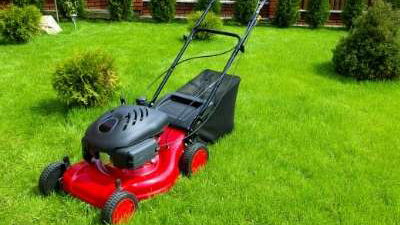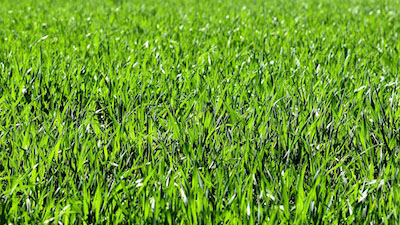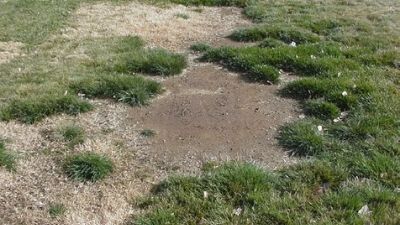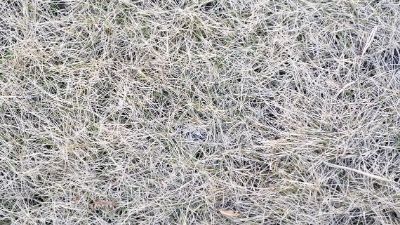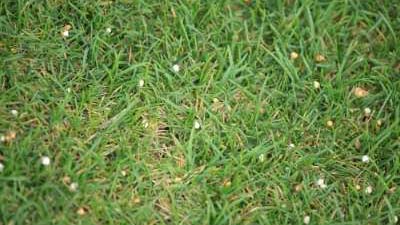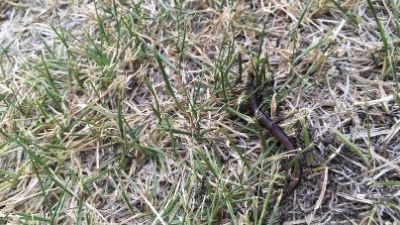Preparing Soil for Turfgrass Establishment – Northern Utah
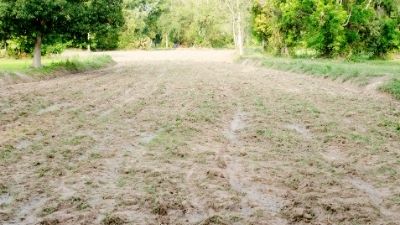
Introduction
Successful establishment of a lawn is best achieved with careful planning, soil preparation, appropriate seed or sod choice, and an understanding of turfgrass requirements.
Soil Preparation
Soil preparation is often neglected prior to establishing a new lawn or during renovation of an existing lawn, but is among the most important factors in maintaining the long-term health, quality and functionality of the lawn. Very often, sod is laid or seed is planted on soil that may not be well suited for the long-term health of the turf and the negative results may not be seen for a few years. As a result, when lawns decline, the association between an unhealthy turf and poor soil preparation is often missed. Results of inadequate preparation can be costly and may include poor establishment, water stress, and frequent disease and/or pest problems (Landschoot, 2017).
The ultimate goal of preparing the soil is to create a condition in which;
- Soil nutrient holding capacity is maximized,
- Roots can penetrate deeply into the soil,
- Beneficial soil microorganisms can thrive and facilitate nutrient uptake and pest and disease resistance, and
- Irrigation water can penetrate deeply into the
soil.
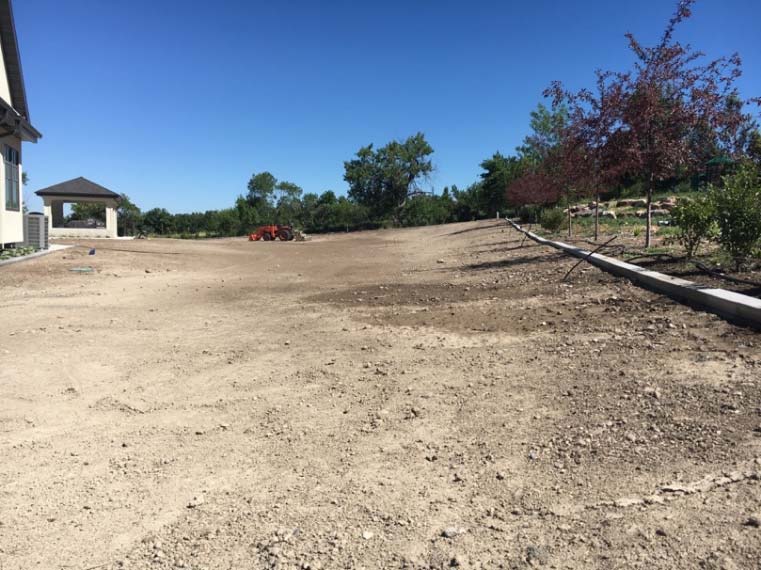
(Photo credit: Grant Cardon).
To do this, there are a few steps to follow before planting. They include;
- Soil testing,
- Controlling weeds,
- Relieving soil compaction,
- Amending the soil with compost, and
- Planning and installing an appropriate irrigation system.
Soil Testing
Evaluate soil before planting. A typical soil test will identify soil texture (clay, sand, loam, etc.), pH, salinity, phosphorus (P), and potassium (K) levels. Routine soil tests are inexpensive and help ensure your soil is suitable for growing turf by recommending appropriate soil amendments. For more information about soil testing at Utah State University, visit the Utah State University Analytical Laboratory website. The USU Extension factsheet “Lawn Fertilizers for Cool Season Turf” gives information about how to interpret soil test results. Local USU Extension county offices can also help in understanding results and correcting any potential problems.
Controlling Weeds
Weeds are detrimental to establishing a new lawn because they compete with grasses for available light, nutrients, and water. Therefore, the best time to control weeds is before planting new lawns. For annual and biennial weeds, a non-selective herbicide such as glyphosate, labeled for residential use, is usually sufficient. Use such products well in advance of establishing the lawn to meet the label’s replant interval. Also, keep in mind that weed seeds may not all germinate simultaneously and multiple applications may be necessary.
Perennial weeds such as dandelion, field bindweed, and Canada thistle are more difficult to control and multiple applications of an herbicide may be needed to reduce weed pressure to a level at which can be properly established. The most important time to control these types of weeds is in early fall, although applications during other points during the growing season can be helpful.
Many weed seeds do not germinate in late summer making this the ideal time to plant grass seed. Late summer planting will allow the lawn to grow in, outcompeting most spring weeds. Perennial weeds not previously eliminated can be treated as needed after the lawn is established.
Relieving Compaction and Amending with Compost
Most home planting sites have compacted soils due to previous construction activities. Compaction impedes water movement, reduces soil oxygen, and limits root depth. Planting sites need water to penetrate to at least a 10” depth, and have oxygen available for proper root development and to encourage beneficial soil microbial activity. Roots need to penetrate soil deeply to take up water and nutrients from a large volume of soil. This naturally makes grass more drought and heat tolerant and less dependent on repeated fertilizer applications.
Careful soil tilling is the easiest way to reduce soil compaction. Usually one or two passes with a tiller set as deeply as possible are sufficient. Repeated tilling can pulverize the soil and make compaction worse. The soil should be moist, but not wet enough to cause soil to stick to the tiller tines.
Incorporating compost with tilling is the best way to improve existing soil for the long-term no matter the soil type. Compost increases water and nutrient holding capacity in sandy soils. In clay soils compost improves drainage. It is a common practice to apply compost just before seeding a new lawn or laying sod. However, once compost is incorporated into the soil it is best to wait several days to two weeks before planting to allow any salts that may be in the compost to leach through the soil. It also gives the compost time to break down and actually improve the soil. If possible apply compost the fall prior to planting, or in the spring. Manage the weeds for the growing season and plant in late summer or early fall.
Compost is derived from both animal (steer manure, for example) and plant sources. Ground bark, grass clippings and leaves are common sources of plantbased composts. Plant-based composts usually have lower salt content, while animal-based composts often have a greater nitrogen (N) value. It is also common to find both types blended together.
Otherwise, it is unimportant where the compost was derived, as long as it is of good quality and properly cured. When done composting, it should have an earthy smell and not one of manure. The components it was made from should not be readily identifiable.
One of the biggest mistakes of starting a new yard is the belief that it is necessary to haul in ‘top soil’ to improve growing conditions. In the vast majority of situations, existing soil is sufficient for growing turf. In many cases, purchased soil may not even be as good as the existing soil, and often has problems such as containing noxious weed seed. It is also recommended that purchased soil be tested and assessed for suitability with the existing site prior to use.
A few situations exist where it may be necessary to bring in additional soil, such as if the existing grade must be raised, or soil is too rocky to cultivate. When adding top soil, apply a minimum of 6 to 12 inches. If less is needed, make sure to blend some of the new soil into the existing soil to create a transition zone between the two types of soil. Further, if topsoil is hauled in it is still beneficial to incorporate compost into it.
Finally, before seeding or sodding the area, the soil should be firmed with a light roller so that footprints and spreader wheels will not leave deep prints or ruts.
Seeding
Seed Mixtures and Blends
Turfgrasses are often seeded in species mixtures or varietal blends of the same species to address variability of site conditions, as well as to enhance genetic diversity of the stand. Seed mixtures and blends can accommodate sunny and shady areas, well-drained or poorly drained soils, and diverse microclimates. They are also better able to withstand many different environmental and pestrelated stresses than single species or single variety stands.
Cool-season turf species, such as Kentucky bluegrass, are most commonly planted in northern Utah. Other suitable species include perennial ryegrass, turf-type tall fescue, and the fine fescues among others, and suggested mixtures of coolseason turfgrass species are listed in Table 1.
Site conditions, function, and the needs of the property owner will guide turfgrass species and variety choices. For more specific information on selecting turfgrass species and varieties for Utah, access the Turfgrass Cultivars for Utah fact sheet.
Timing of Seeding
Cool-season grasses may be seeded any time from mid-spring to early fall, but late summer is the optimum seeding time in northern Utah. The warmth of and dryness of the soil in late summer is more advantageous for seed germination than the wet and cool soil conditions of the spring, allowing for faster germination. In addition, cool-season grasses planted in the late summer will have both the cool fall and spring growing seasons to establish before the heat and dryness of the summer months returns. Annual weed pressure is also lower in the late summer and early fall than during the spring months.
Table 1. Cool-season species mixtures for establishing home lawns, grounds, parks and managed landscapes (adapted from Landschoot, 2017).
| Turfgrass Species | Seed Rate (lbs./1,000 sq. ft) | % in Mixture (by weight) |
|---|---|---|
| Full Sun | ||
| Kentucky bluegrass | 6-8 | 100 |
| turf-type tall fescue |
2-3 | 100 |
| perennial ryegrass | 4-5 | 100 |
| Kentucky bluegrass + perennial ryegrass |
2-3 | 80-90 10-20 |
| Kentucky bluegrass + fine fescues + perennial ryegrass |
3-4 | 40-60 20-40 10 |
| Partial Shade | ||
| fine fescues + Kentucky bluegrass + perennial ryegrass |
4 | 40-50 20-40 10 |
| turf-type tall fescue | 6-8 | 100 |
| fine fescues | 4-5 | 100 |
| Full Shade | ||
| fine fescues | 4-5 | 100 |
| Over-seeding | ||
| perennial ryegrass | 4-6 | 100 |
Starter Fertilizer
At the time of seeding, starter fertilizer should be applied to the soil surface (not tilled in) to provide nutrition to the growing seedlings, speeding up establishment. The most important nutrient for establishing turfgrasses is phosphorus (P) and the starter fertilizer should be high in P, even if soil testing indicates adequate levels. New seedlings require high amounts of P for development, but they do not have adequate root systems to take up existing P in the soil, which is relatively immobile. The P in the starter fertilizer places the P exactly where new seedlings are developing roots at the soil surface. A good nutrient ratio for starter fertilizer is 12-25-10, or a similar ratio that is high in P, but low in N to prevent burning new seedlings (Christians, 1998).
Seeding Methods
When seeding grasses, the goal is to distribute the seed uniformly and any method that facilitates uniform distribution is appropriate. Seeding by hand, drop or broadcast spreader are all effective. With any of these methods, divide the desired amount of seed in half. Spread the first half of the seed back and forth across the area and spread the second half of the seed at right angles to the first (Landschoot, 2017).
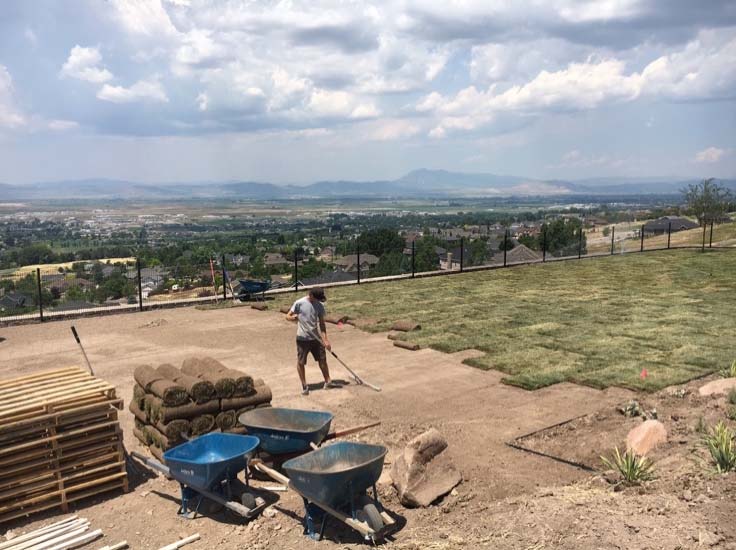
credit: Grant Cardon).
Sodding
Site preparations for sodding are the same as preparations for establishment from seed. The soil surface should be smooth and dry or slightly moist, but not wet. Cool-season grasses may be sodded at almost any time of the year that the soil is not frozen. However, late summer, spring or fall are the optimum times.
Sod is typically cut into rectangular strips that are delivered folded or rolled on pallets. Once delivered, the sod should be laid within 24-48 hours to avoid decomposition within the rolls or folds and death of the turf. When placing the sod, lay in a staggered, brick-like pattern so that seams do not line up. Place the strips tightly against one another along all edges to avoid drying and to speed up “knitting together” of the strips. Once placed, roll the lawn surface with a light roller before watering and press any raised areas down to avoid scalping by mowers. Finally, walk the entire area and fill in any small openings between turf strips with soil.
Caring for Newly-Established Turf
The 1 to 2-month period following seeding or sodding is the most critical for establishing grasses. Irrigation is most crucial during this time, but soon enough mowing, fertilizing, and weed control must also be considered.
Irrigation
Following seeding or sodding, the grass’s root system is delicate and shallow and regular irrigation is required to avoid desiccation. For seeded areas, keep the soil surface moist with several short irrigations over the course of the day. Once the seedlings are 0.5 to 1 inch tall, the roots will be established enough to take up water from deeper in the soil profile and the soil surface may be allowed to dry without the risk of killing the seedlings (Christians, 1998).
Immediately following sodding, sufficient water should be added to move through the sod and thoroughly wet the underlying soil. This will encourage the roots of the sod to start establishing into the soil on site. To be certain that the water is penetrating deeply enough, pull back the corners of a sod strip or two and confirm that the underlying soil is wet. Continue irrigating to maintain moist, not saturated, soil for 10-14 days until the sod has rooted into the underlying soil. Avoid traffic during this time as well.
Mowing
Mowing establishing turf on a frequent basis will improve its appearance and will encourage “knitting together” of the plants. Regular, frequent cuttings are less stressful to the turf than infrequent cuttings that remove large amounts of leaf tissue. Begin with a light-weight mower and cut when the grass is no more than 1/3 higher than the desired cutting height. For example, if the desired mowing height is 2 inches, always mow before the grass reaches 3 inches in height.
Fertilization
Applying 1/2 lb. of N per 1,000 sq. ft. 1 to 2 months after seeding or sodding will help to thicken the new turf. If signs of chlorosis appear on sod, fertilize with 1/2 lb. of N per 1,000 sq. ft. as soon as the area will bear traffic, usually within 10-14 days.
Weed Control
Newly established turf is very sensitive to most herbicides and weed control should be avoided until the area is completely established. A good rule of thumb is to wait until after the third mowing before considering applying any herbicide. As always, thoroughly reading and carefully following the instructions on herbicide labels is critical.
Traffic Control
Avoid equipment and foot traffic on newlyestablished turf areas until the grass is well-rooted and has been mowed several times. Turf seedlings can be bruised or uprooted if they receive traffic too soon and root development in sod may also be restricted.
References
- Christians, N. 1998. Fundamentals of Turfgrass Management. Ann Arbor Press, MI.
- Landschoot, P. 2017. Lawn establishment. College of Agricultural Sciences, Pennsylvania State University.
Utah State University Extension
Peer-reviewed fact sheet
Download PDF
Authors
Michael Caron, Grant Cardon, Taun Beddes, and Kelly Kopp
Related Research






